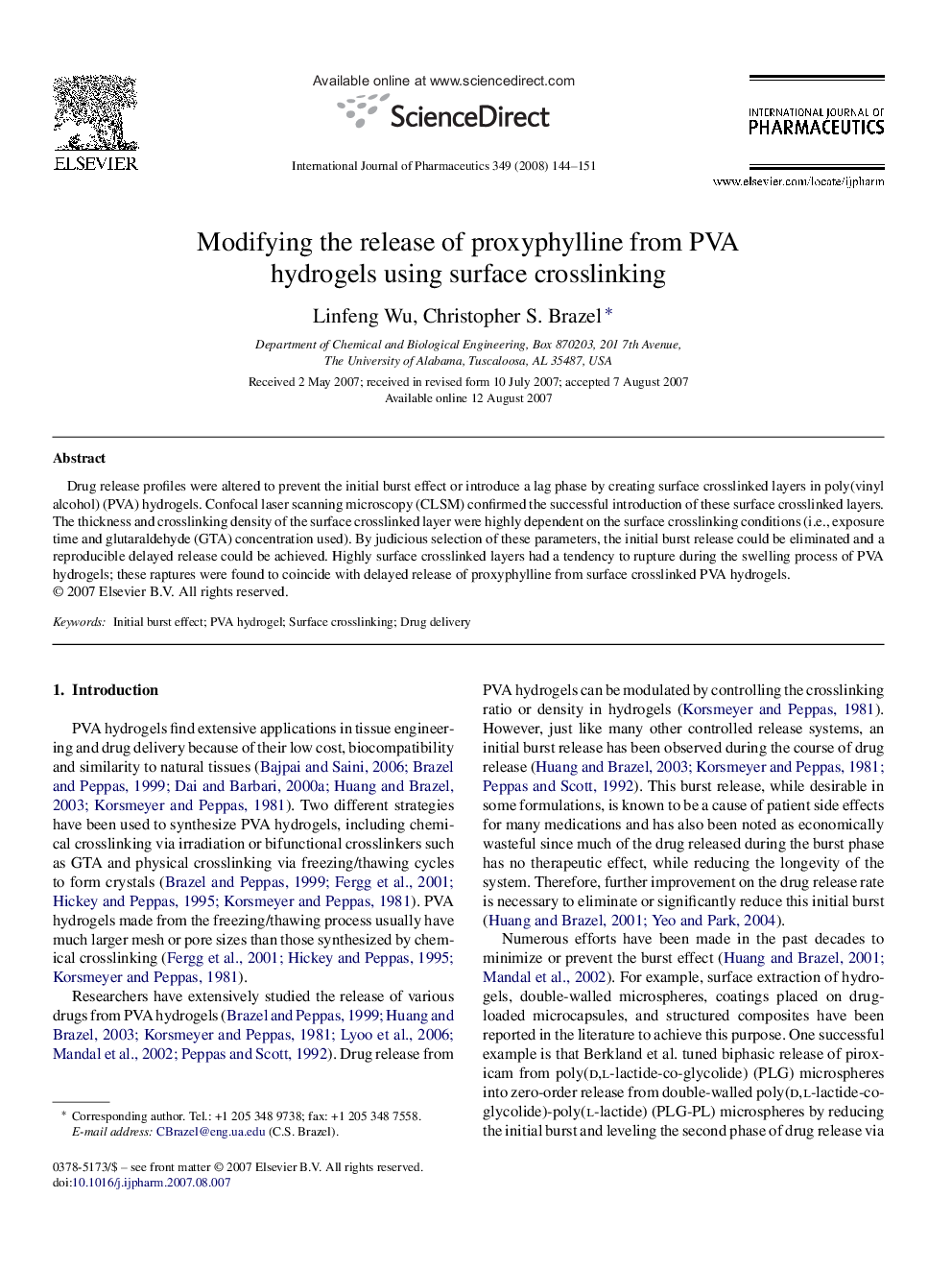| Article ID | Journal | Published Year | Pages | File Type |
|---|---|---|---|---|
| 2505811 | International Journal of Pharmaceutics | 2008 | 8 Pages |
Drug release profiles were altered to prevent the initial burst effect or introduce a lag phase by creating surface crosslinked layers in poly(vinyl alcohol) (PVA) hydrogels. Confocal laser scanning microscopy (CLSM) confirmed the successful introduction of these surface crosslinked layers. The thickness and crosslinking density of the surface crosslinked layer were highly dependent on the surface crosslinking conditions (i.e., exposure time and glutaraldehyde (GTA) concentration used). By judicious selection of these parameters, the initial burst release could be eliminated and a reproducible delayed release could be achieved. Highly surface crosslinked layers had a tendency to rupture during the swelling process of PVA hydrogels; these raptures were found to coincide with delayed release of proxyphylline from surface crosslinked PVA hydrogels.
